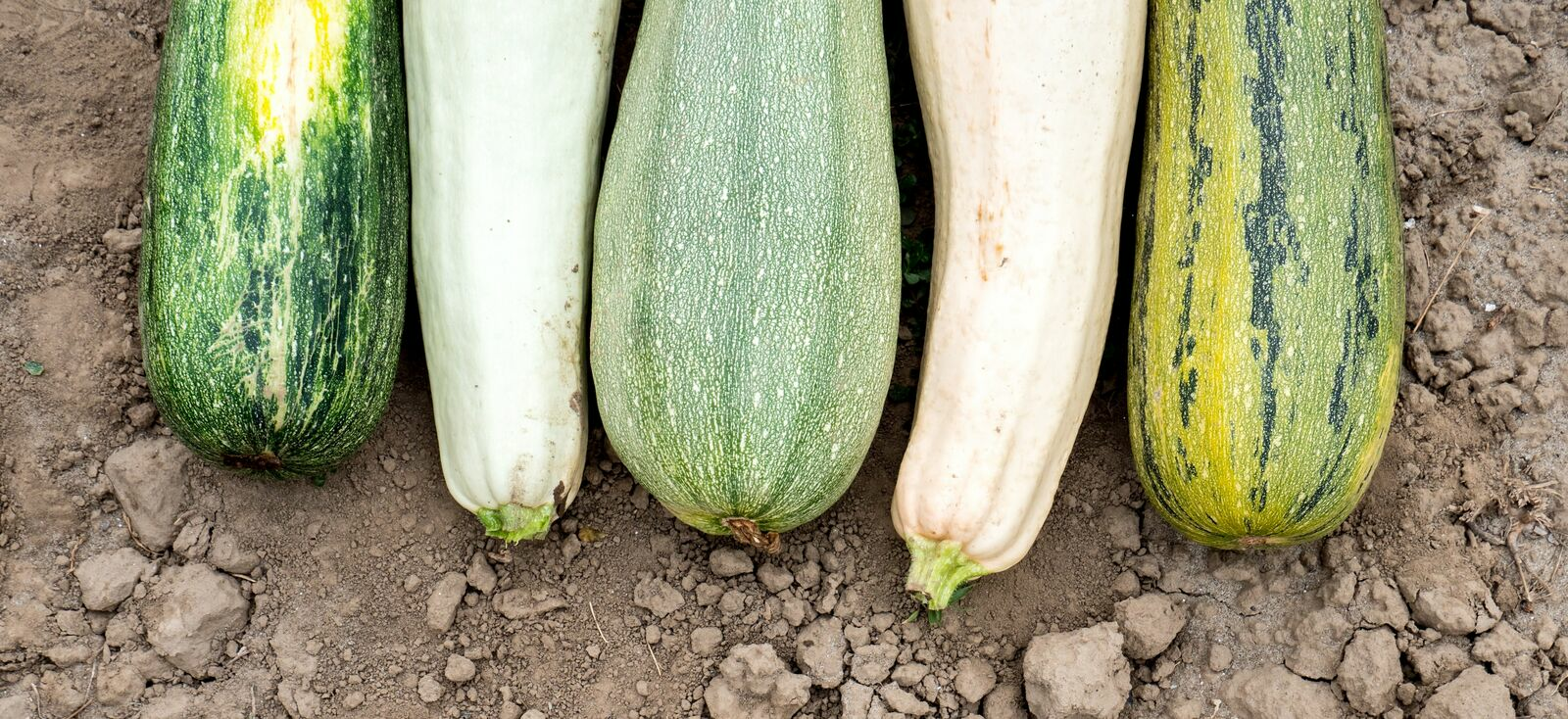
Different Types of Zucchini: Round, Yellow and Climbing Varieties
Today, there is a wide range of shapes, colors and patterns in zucchini varieties. A distinction is made between hardy, mostly old, varieties and hybrid varieties. To make it easier for you to choose the right varieties, we have put together a small overview for you here and give examples of round zucchinis, yellow zucchinis and old varieties.
This Article Contains:
- What Varieties of Zucchini Are There?
- Round Zucchini Varieties
- Planting Yellow Zucchini Varieties
- Heirloom Varieties of Zucchini
- White Zucchinis: These Varieties Are Available
- Climbing Zucchini Varieties: Space-Saving Gardening
- Obtain Your Own Seeds of Open-Pollinating Varieties
- Frequently Asked Questions About Zucchini Varieties
Quick Overview
Round Zucchini Varieties
- ,Round Piacenza'
- ,One Ball F1'
- ,Tondo chiaro di Nizza'
- ,Tondo di Toscana'
Yellow Types of Zucchini
- Lemon
- Soleil
- Yellow Patisson
- Orelia F1
- Siesta F1
- Gold Rush
Heirloom Varieties of Zucchini
- 'Coucourzelle of Tripolis'
- 'Black of Milan'
- 'Verde D'Italia'
- 'Zuboda'
What Varieties of Zucchini Are There?
Zucchinis are very easy to grow yourself in the garden. It is hardy and high-yielding, making it ideal for the hobby garden. The fruits of zucchini plants come in different shapes and colors. Apart from the classic green variety, they are available in white, green or yellow, striped varieties or uniform colors. The golden, elongated fruits of the 'Gold Rush' variety are particularly delicate and delight with their radiant color. There are now numerous varieties, so that round zucchini varieties such as the 'Round Zucchini Summer Squash' are also available. Depending on the variety, the fruits from just 1 - 2 plants are enough to cover the needs of an entire family.
Round Zucchini Varieties
- ,Tondo di Toscana': Traditional variety from northern Italy with light green, spherical fruits. Harvest the zucchinis young for a particularly tender taste.
- ,Tondo chiaro di Nizza': Initially bushy growing, later slightly climbing variety with very decorative, spherical fruits. The delicate, light green balls are slightly marbled with firm, white, very tender flesh and soft skin.
- ,One Ball F1: Hybrid variety with yellow, rather smaller fruits. Round zucchinis are particularly good for hollowing out, stuffing and roasting in the oven.
- ,Tondo di Piacenza: The traditional Italian variety of Ronde de Nice produces round, tasty fruits with a dark skin. Harvest in good time so that they do not grow too large.
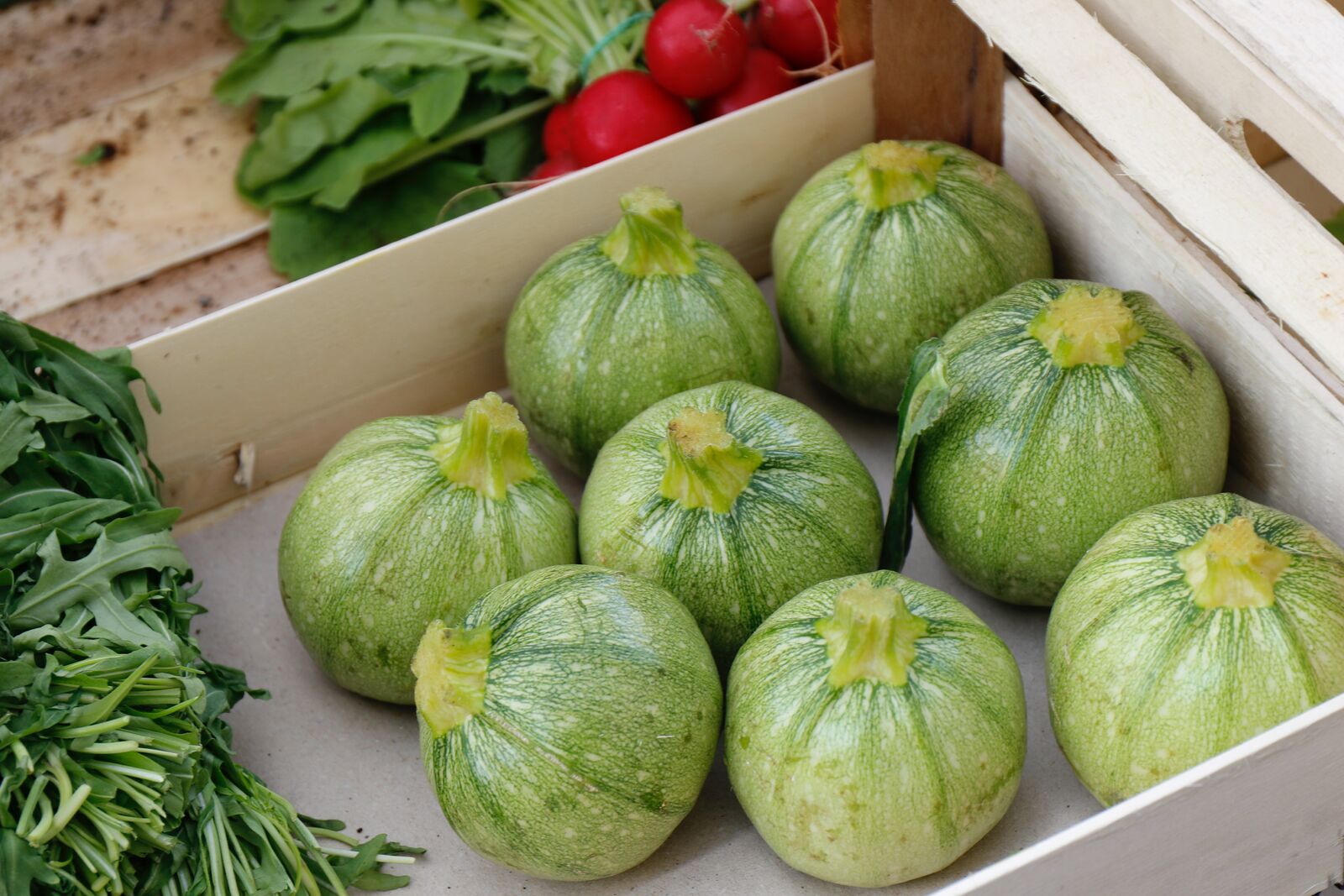
Planting Yellow Zucchini Varieties
- ,Lemon': Yellow zucchini variety in a special lemon shape. The sun-yellow, handy fruits have slightly orange stripes - a real eye-catcher.
- 'Soleil': High-yielding zucchini variety with elongated, yellow fruits. It is highly resistant to powdery mildew.
- 'Yellow Patisson': Zucchini with yellow skin and star shape. Harvest the fruits as small as possible (diameter < 6 cm/2.4 in) so that new inflorescences can be set immediately.
- 'Orelia F1': High-yielding, yellow zucchini variety with elongated fruits. Harvest begins in June and continues into the fall.
- ,Siesta F1: Courgette variety with yellow skin and clear white stripes. It is particularly decorative and has a good aroma.
- ,Gold Rush': Golden-yellow, elongated fruits with a fine aroma. Harvest the fruits young and regularly so that the plant can immediately produce new flowers.
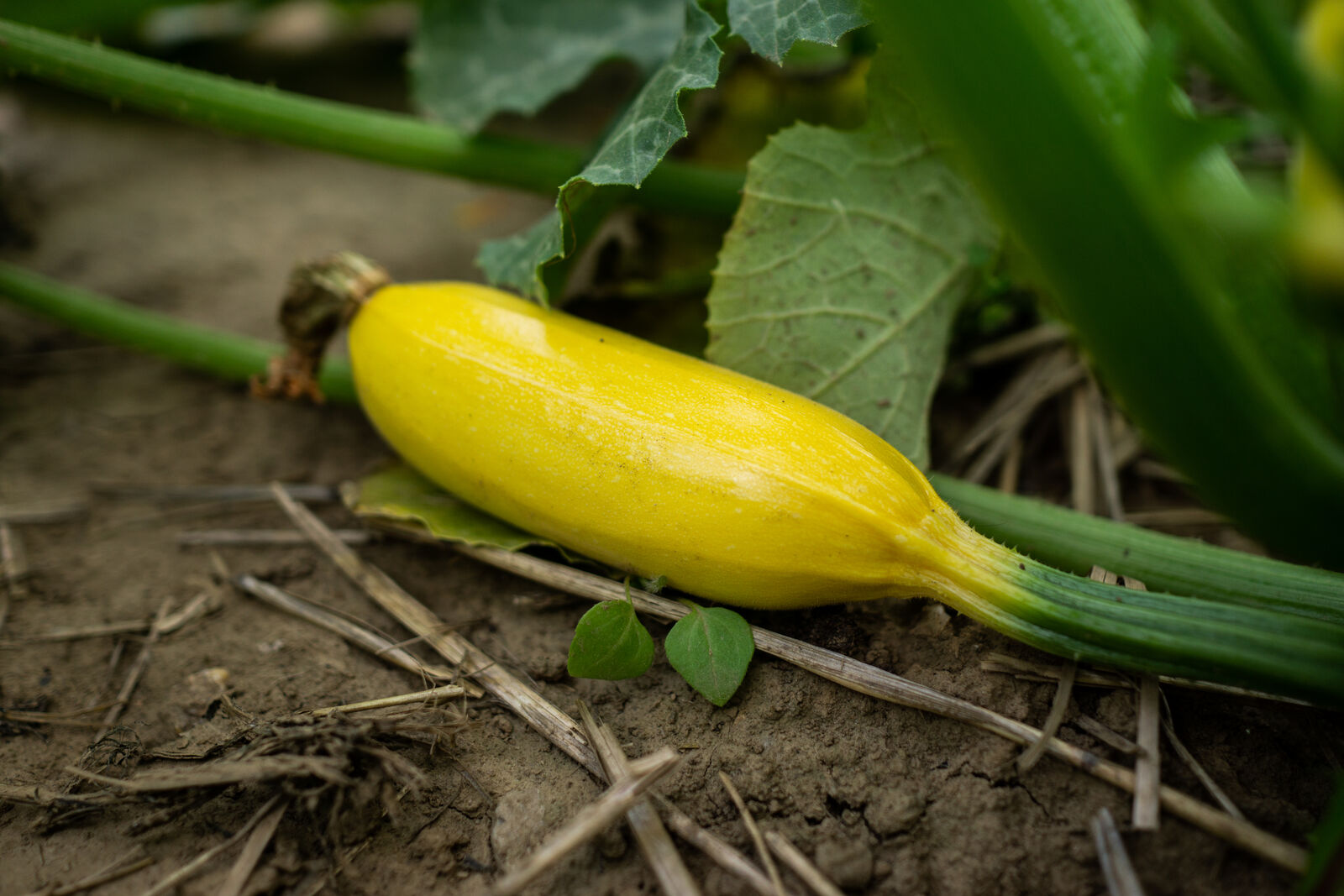

Find out More About Courgette Types and Varieties!
In our library, you will find information on the individual courgette varieties with cultivation periods, planting and harvesting tips. You will also find companion plants to help you plan a mixed crop.
Discover Library NowHeirloom Varieties of Zucchini
- 'Coucourzelle di Tripolis': Tried and tested Italian variety. Zucchini with dark green skin and light green stripes, club-shaped.
- 'Nero di Milano': Traditional Italian variety with very elongated fruits. A zucchini with very dark green, almost green-black skin. The strikingly large flowers can be used well in the kitchen.
- 'Verde D'Italia': Traditional heirloom variety from Italy with long, dark green fruits. This zucchini variety is particularly productive and tasty.
- 'Zuboda': Elongated, apple-green fruits with a cucumber-like taste. This variety is particularly high-yielding and tastes very juicy and refreshing.
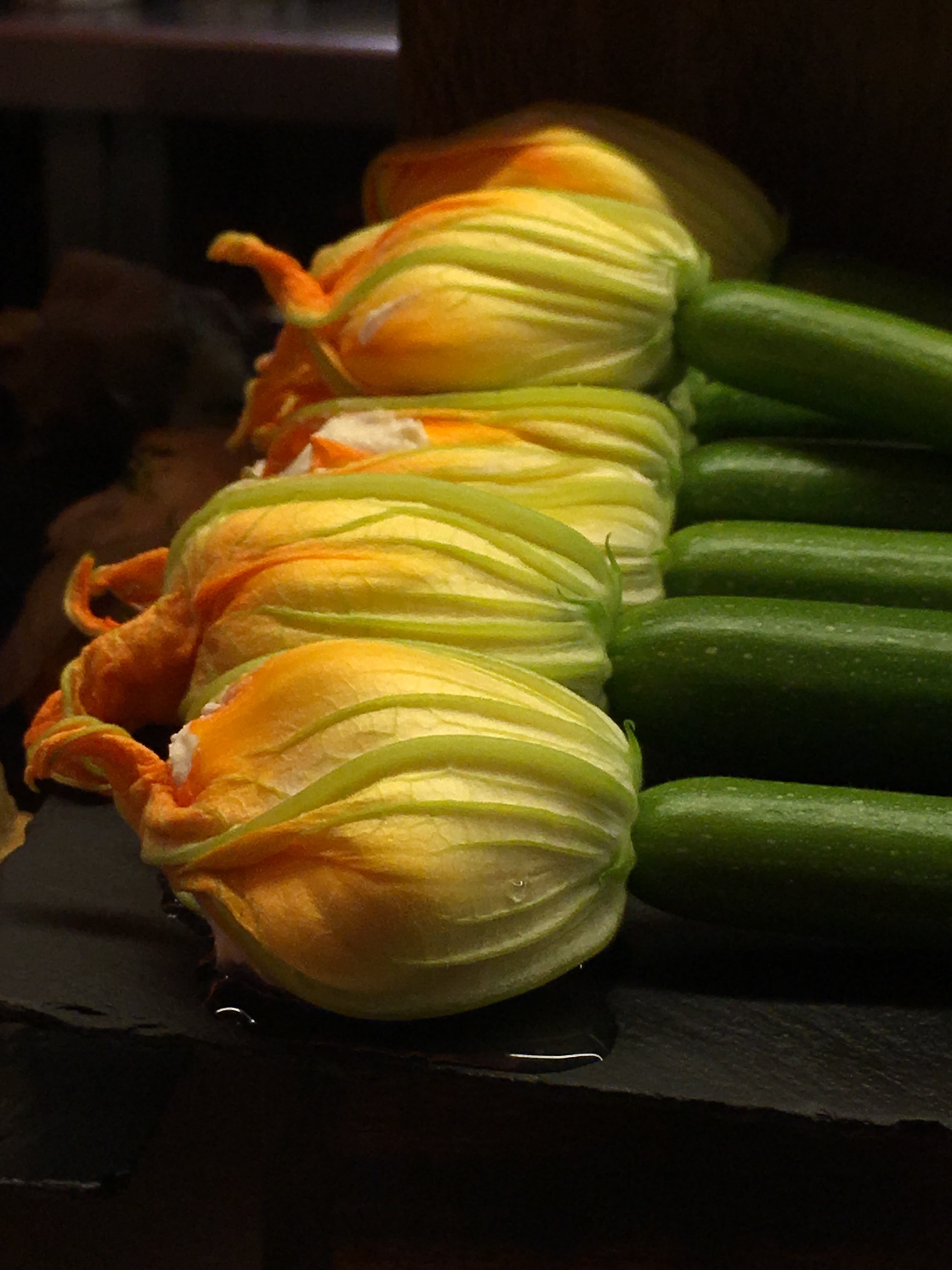
White Zucchinis: These Varieties Are Available
- ,Erken': Open-pollinated variety with greenish-creamy white fruits. This zucchini variety grows slightly creeping and is very productive. Due to its growth habit, you can also grow this variety vertically as a climbing zucchini plant.
- 'Custard White': This special variety forms flat, round and cream-colored pumpkins with delicate skin, which is why it can be processed like a zucchini. The fruits have a mild taste and a slight artichoke aroma.
- ,Bianco di Sicilia': Elongated fruits that only change color from light green to creamy white as they ripen.
Climbing Zucchini Varieties: Space-Saving Gardening
Climbing zucchini plants are less well-known than bushy varieties. However, these varieties are ideal for vertical cultivation in pots or on the balcony. So if you have little space but still want to garden, then climbing zucchinis are just the thing for you.
Climbing Zucchinis: Varieties for Growing in Pots
- ,Tromboncino d'Albenga' (also: 'Zucchetta'): This traditional Italian climbing zucchini forms long, curved light green to beige fruits. It belongs to the musk pumpkin family and is resistant to pests and diseases.
- ,Black Forest': climbing zucchini with dark green fruits. This variety is suitable for the open field, balcony and pot and can grow to a height of up to 2 meters/2.2 yd. Unfortunately, this variety is an F1 hybrid and is therefore not seed stable.
- ,Shooting Star': A zucchini with yellow fruits. As it is also an F1 hybrid, you cannot obtain your own seeds. This variety reaches heights of up to 1.2 m/47.2 in.
You can find Tips on Growing Zucchinis Vertically in Pots in this article. Climbing zucchinis are a space-saving option for growing your own zucchinis on the balcony. Mixed cultures are possible even in small spaces, for which you can find inspiration and ideas in our digital bed plans.
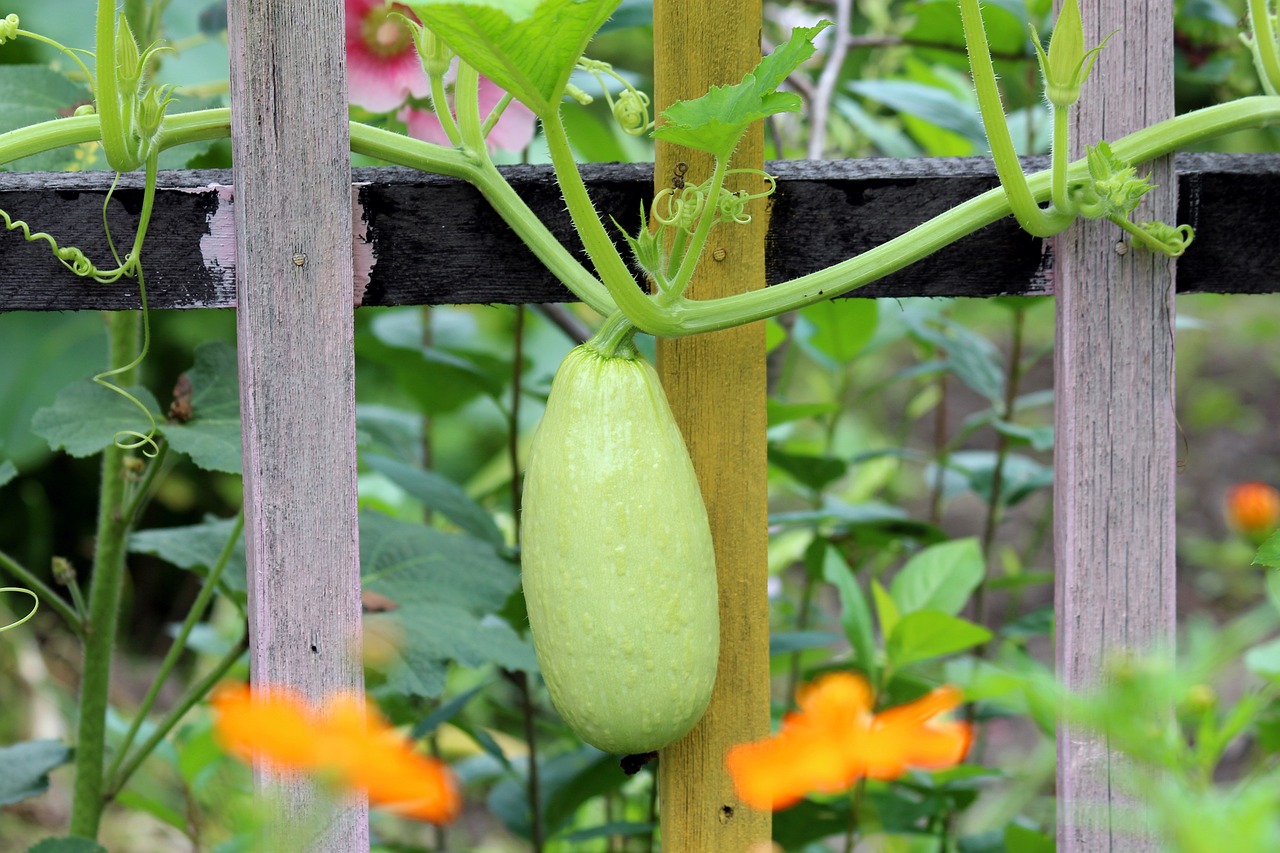
Obtain Your Own Seeds of Open-Pollinating Varieties
New hybrid varieties (F1) cannot be propagated from their own seeds; they lose more of their original characteristics with each generation. However, you can obtain your own seeds from old, seed-resistant zucchini varieties. So if you want to obtain your own seeds from a particularly high-yielding variety, you should only Grow a Open-Pollinated Plants in your garden. The variety 'Cocozelle di Tripolis' is a seed-resistant zucchini variety that is very popular with many hobby gardeners.
Cucurbits like to cross-pollinate with each other, which means that the varieties mix. To prevent this, you can keep a sufficient distance from the next pumpkin plant or use an isolation tunnel. Otherwise, you risk taking seeds that produce inedible and even poisonous fruit. Therefore, avoid growing zucchinis and pumpkins at the same time, especially ornamental pumpkins in the same season. Otherwise, the variety may lose its specific characteristics when crossed. It can also lead to increased storage of the bitter substance cucurbitacin. This not only makes the fruit inedible, but also poisonous. The original zucchini varieties produced cucurbitacin as a natural protection against being eaten. In more recent varieties, the bitter substance has been bred out.
And This Is How the Seed Harvest Works:
To do this, the seeds are scraped out of a properly ripened fruit together with the pulp and placed in a bowl of lukewarm water. After a few days, the mixture begins to ferment and the pulp dissolves. The seeds are then washed in a coarse sieve and laid out to dry. When drying, make absolutely sure that the seeds are completely dry, otherwise they will go moldy later. Seeds should generally never be dried in the sun, as this weakens their germination capacity.
If you have any questions or comments, please write to us at [email protected].
Want to get helpful gardening tips all year round and plan your own beds in the best possible way? Then register here or download the Fryd app for Android or iOS.
Fryd - Your digital bed planner
Cover picture by helena munoz on unsplash

Annabell
Annabell is studying agricultural biology at the University of Hohenheim. She also enjoys gardening in her private life, spends a lot of time in nature and loves to be creative.
Learn MoreCurrent Topics in the Community
Hello, I just upgraded the app to "lifetime" and was really excited to start mapping out my garden beds, including the fruit trees and bushes I've already planted. But the program doesn't save my progress while I'm planning, so I have to start over again and again. Also, the program doesn't recognize specific varieties, so I can only enter "general" information. For example, I can't distinguish between a bush tree and a half-standard tree, which is also important. Am I doing something wrong? To be honest, I've already lost interest. Maybe someone who has been working with it for a while can give me some tips. Best regards, Anja

Liked 1 times
Am I the only one experiencing issues with the app or website responding extremely slowly?
Show 1 answer
Liked 8 times
Colorful visitor 🤗
Popular Articles

Overwintering Parsley: How to Do It Successfully
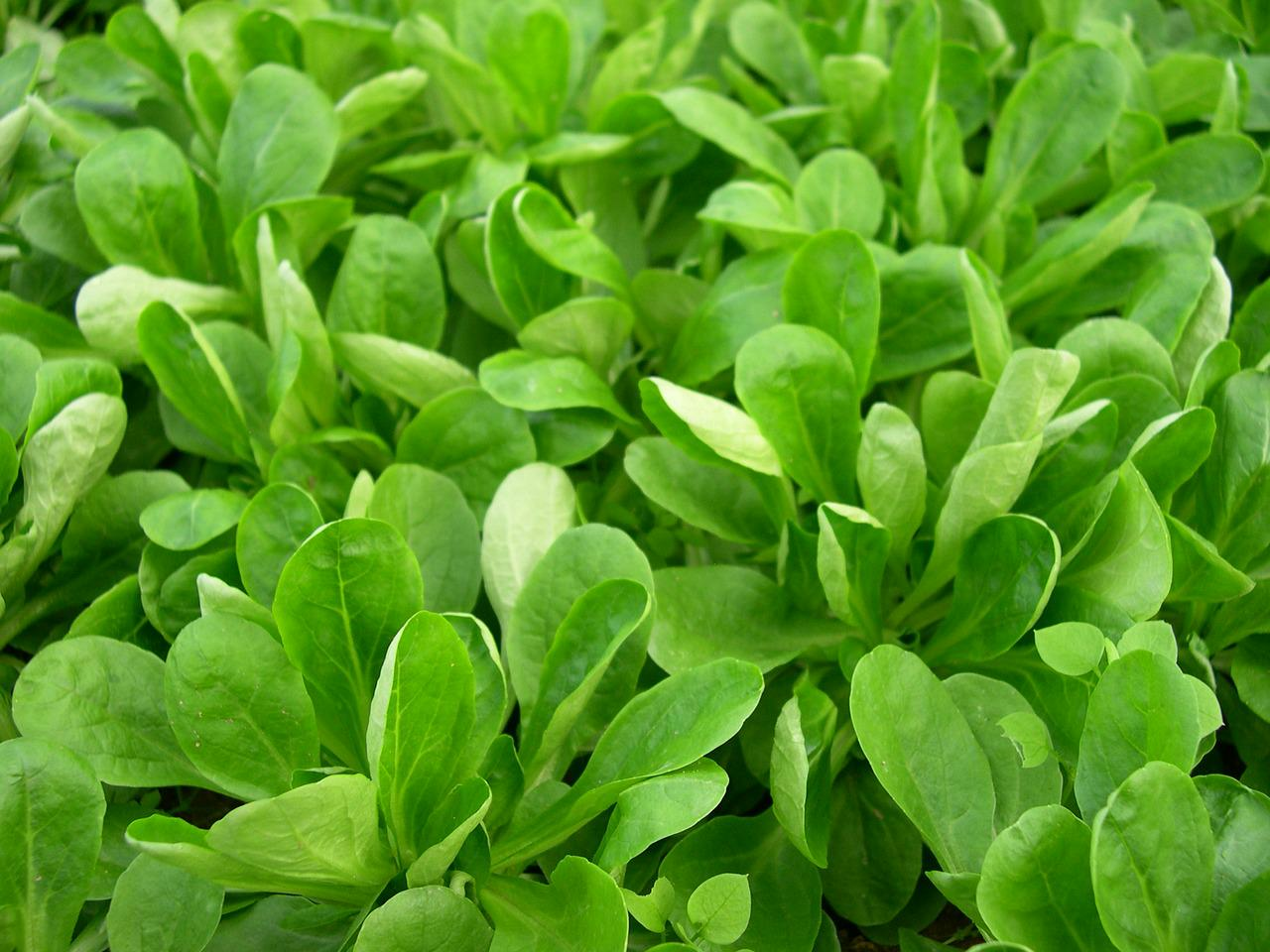
How to Grow Lettuce in Winter: Varieties, Sowing, Harvesting

Growing Sage Plant: Tips for Sowing and Harvesting
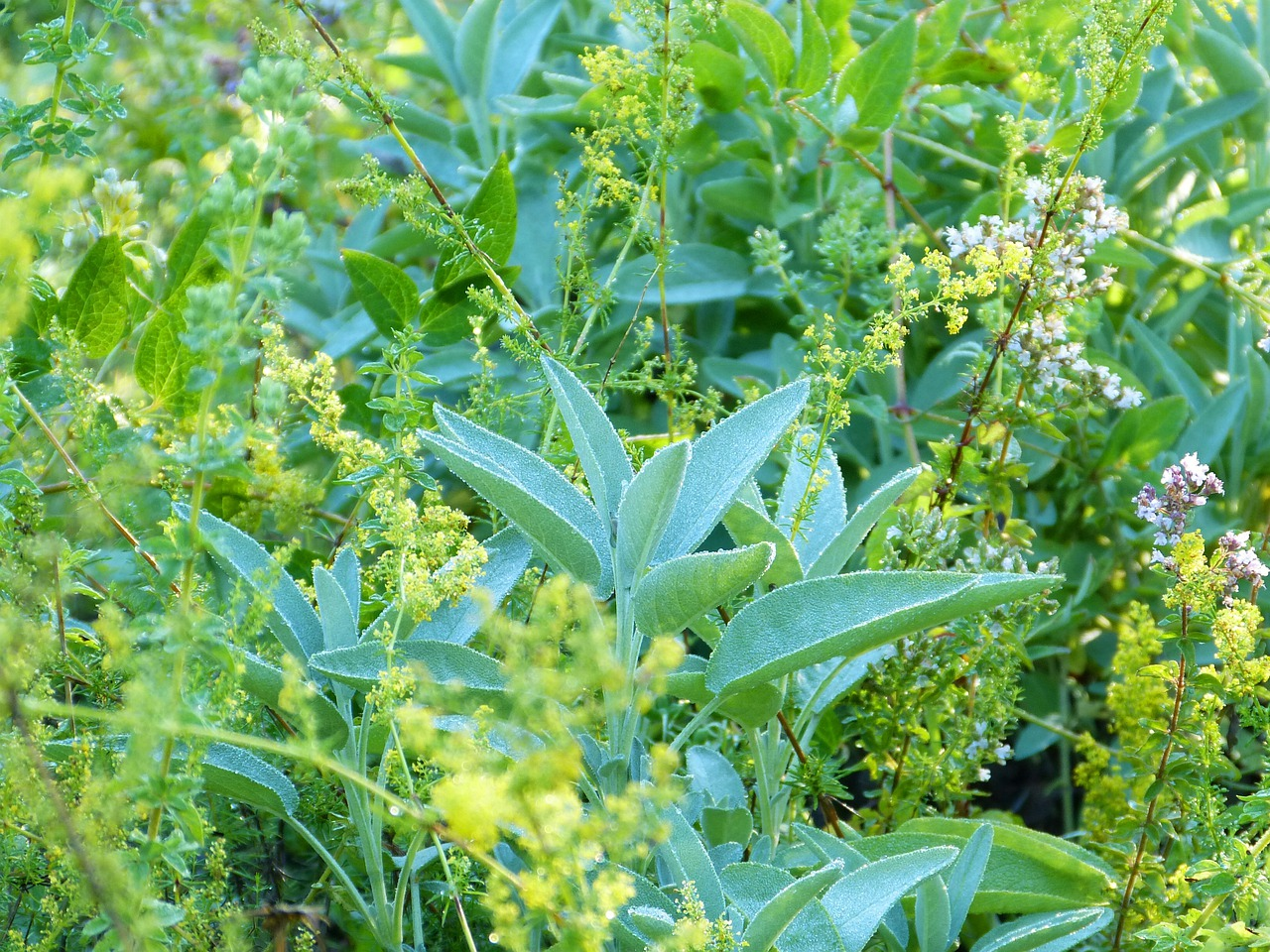
What Herbs Can Be Planted Together?
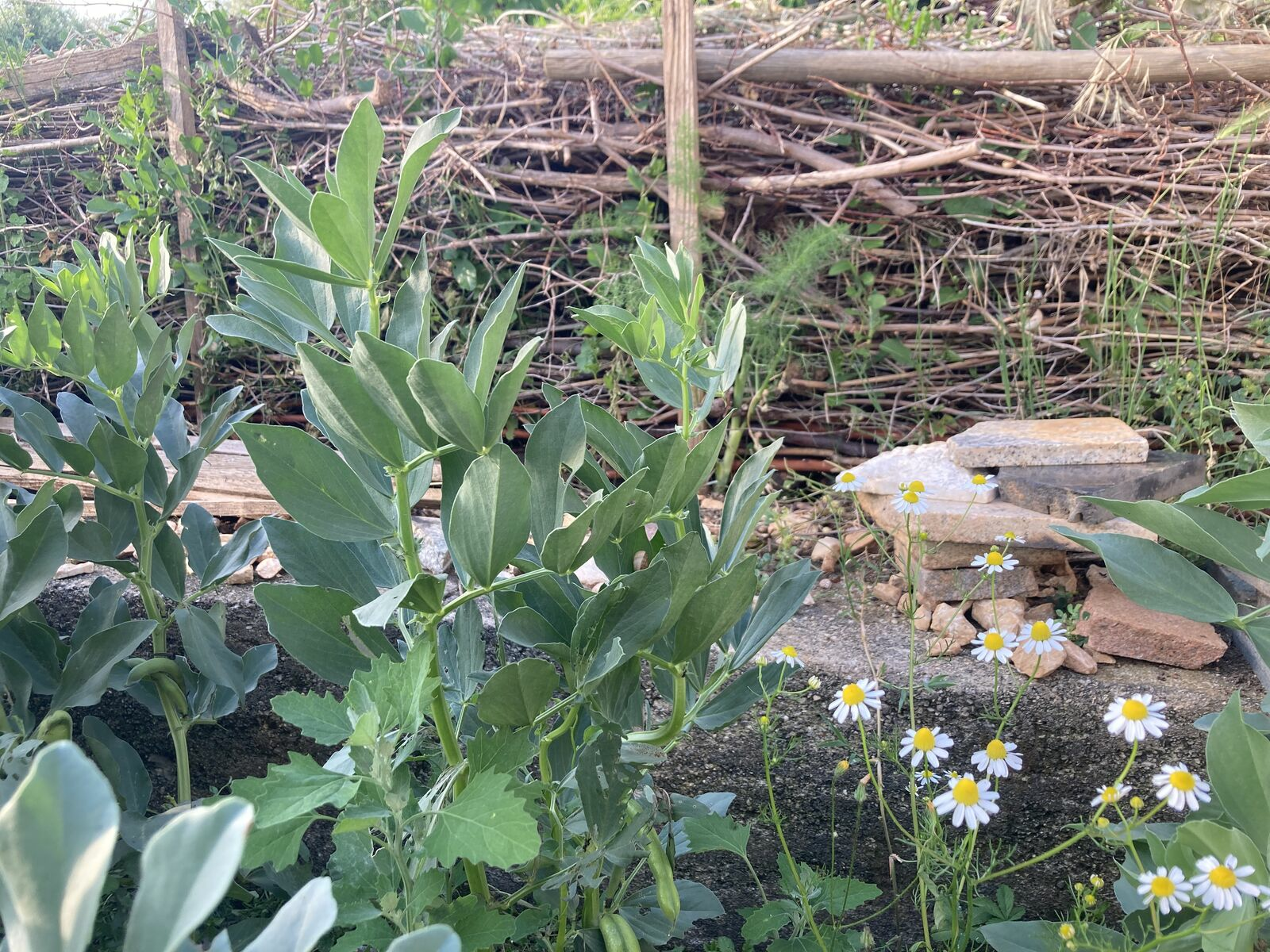
Create & Design a Permaculture Garden
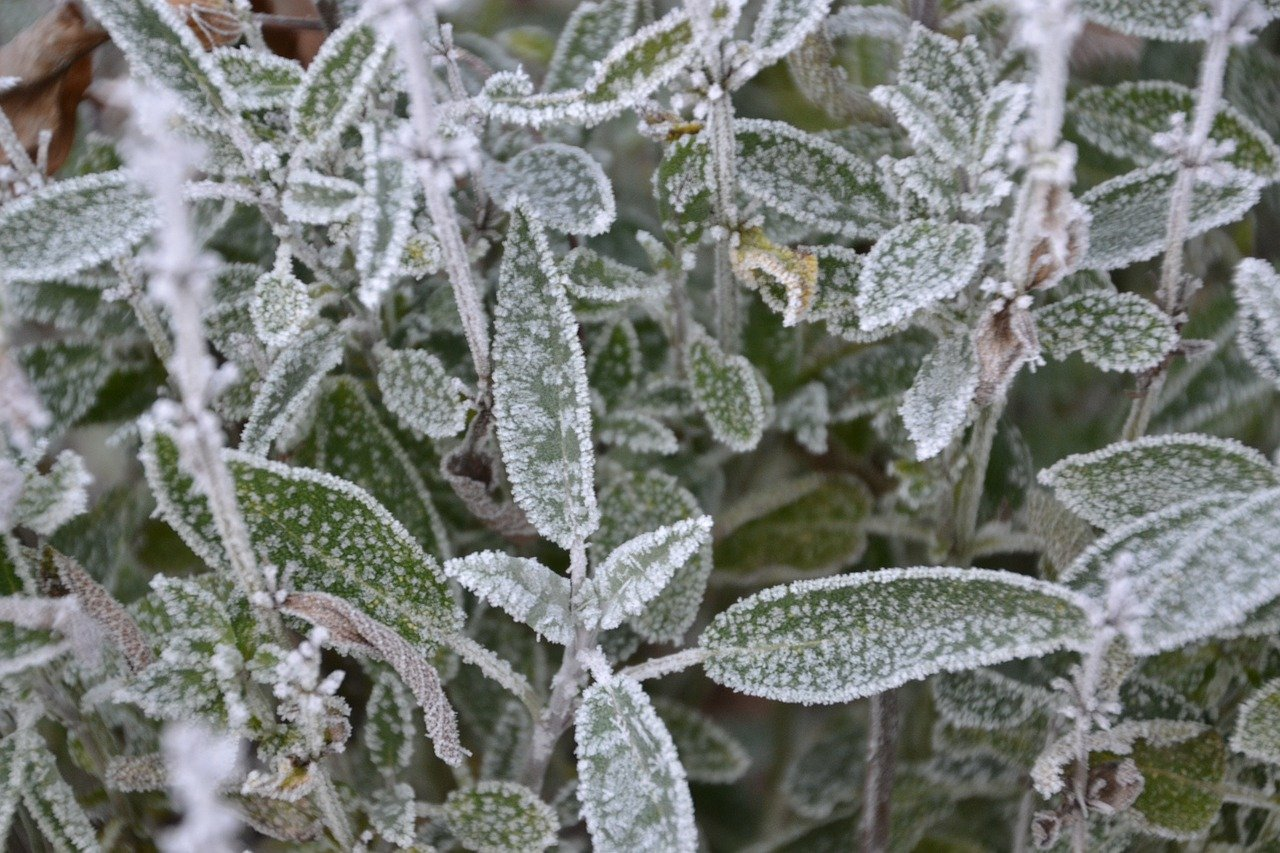
Overwintering Plants: Tubs, Pots and Raised Beds

Pruning, Fertilizing & Propagating Currants: Care Tips

Pruning Raspberries: How to Do It
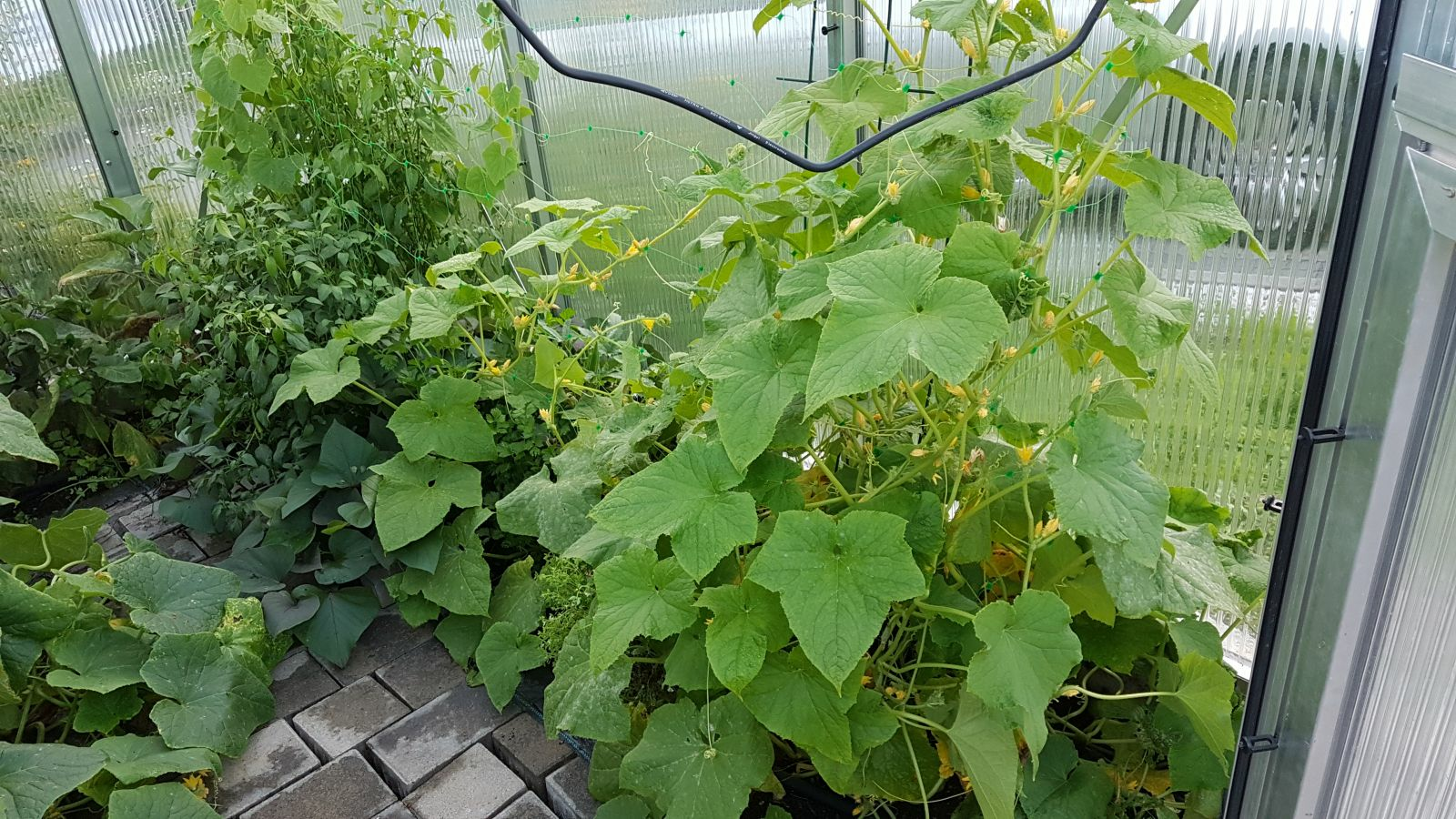
Vegetable Garden With Greenhouse: How to Use Greenhouse Effect
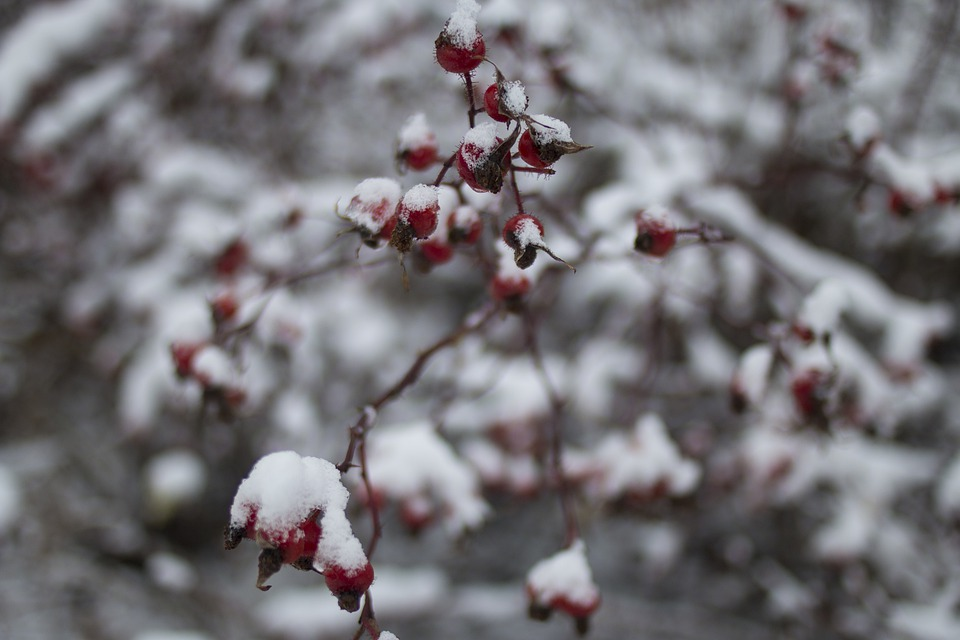
Winterizing Beds and the Garden: How to Do It
FAQ
Are there purple zucchini varieties?
There are indeed purple-colored zucchini. Varieties such as 'Bianco di Trieste' and 'Lunga Bianca' can have a purple coloration. However, purple zucchini varieties are rare and not that common.
What types of zucchini are there?
There are different shapes and colors: in addition to classic green zucchini, there are white, yellow and even purple varieties. There are also varieties with round fruits or climbing zucchinis that form tendrils.
Are old zucchini varieties seed-proof?
Seeds of old zucchini varieties are usually seed-resistant, i.e. you can take your own seeds and sow them again. Unfortunately, this is not possible with many new varieties, the so-called F1 hybrids.
Which zucchini varieties tendrils?
There are also climbing zucchini that you can tie up on trellises. Varieties such as 'Erken' or 'Tromboncino d'Albenga', for example, are suitable for vertical cultivation.